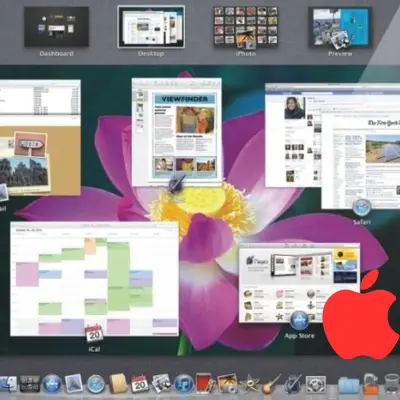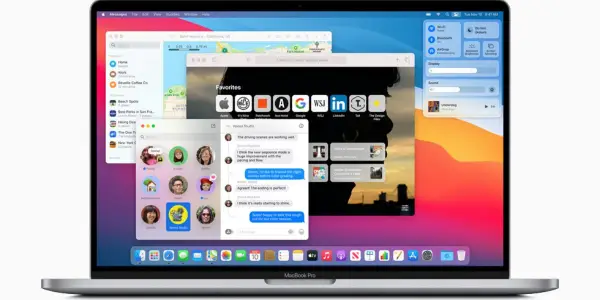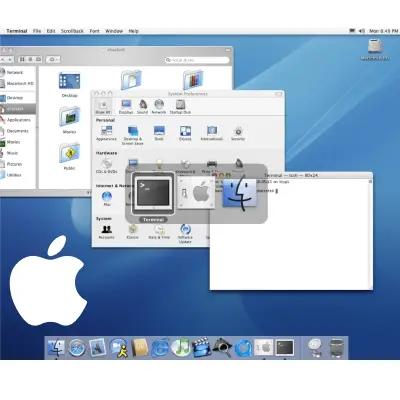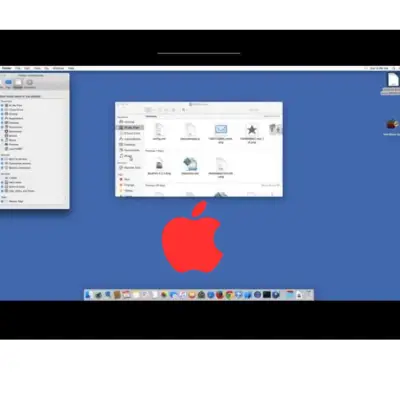Introduction to macOS Image Processing
A. Definition of macOS
Explanation of macOS as Apple’s operating system for Mac computers:
macOS is an operating system developed by Apple Inc. It’s only designed for Macintosh computers. It serves as the foundation for managing software and hardware interactions. It provides users with a seamless and intuitive computing experience. Mention of its user-friendly interface and integration with Apple hardware:

Its user-friendly interface has made macOS renowned. A clean design and ease of navigation characterize it. The integration between macOS and Apple hardware is a key strength. It ensures optimized performance. It creates a cohesive ecosystem where software and hardware work in harmony.
B. Overview of Operating Systems and Platforms for Image
General understanding of the role of operating systems in managing computer functions:Linux image processing
Operating systems serve as the bridge between users and computer hardware. They manage resources and enable the execution of applications. In the context of macOS, it provides a stable and secure environment for various tasks. This includes image processing. Introduction to the significance of platforms in image processing:
In image processing, platforms are the combination of hardware and software. macOS is a platform, offering a foundation for image-related tasks. It provides tools and support for both built-in and third-party applications. Understanding the platform’s role is crucial for effective image processing and workflow management.
macOS Basics
A. History and Development

Brief timeline of macOS evolution, starting with its origins:
macOS has a rich history dating back to its roots in the Macintosh System Software. The timeline starts with the initial release in 1984. This marks the beginning of Apple’s venture into graphical user interfaces.
Subsequent iterations, including Mac OS X and the transition to macOS in 2012, showcase the operating system’s continuous evolution.
Highlights of key milestones and version releases:
Significant milestones include the introduction of Mac OS X in 2001. The shift to Intel processors happened in 2006. The macOS rebranding took place in 2012. Version releases, such as major updates like Leopard, Snow Leopard, and more recent versions like Catalina and Big Sur, show that macOS is always evolving and improving.
B. Key Features
Overview of distinctive features such as the Dock, Finder, and Spotlight:

The Dock serves as a centralized hub for launching applications. It provides quick access to frequently used programs. Finder is the file management tool. It offers a graphical interface for users to navigate and organize files. Spotlight is an advanced search feature. It allows users to locate files, applications, and information swiftly. Discussion on macOS security, stability, and performance attributes:
People recognize macOS for its robust security measures. These include Gatekeeper for app verification and FileVault for disk encryption. The Unix-based architecture achieves stability, providing a reliable foundation. Performance benefits from features like Metal, Apple’s graphics technology. It optimizes graphical task
macOS Image Processing
A. Built-in Image Editing Tools

Exploration of native applications like Preview and Photos:
Preview serves as a versatile tool for viewing and making basic edits to images. It allows users to crop, rotate, annotate, and make adjustments to color and exposure. Photos is a comprehensive application that organizes and edits photos. It offers features like retouching, filters, and album organization. Explanation of basic image editing features available within these tools:
In Preview and Photos, users can access basic editing tools. They can crop, resize, and rotate images. Basic adjustments to brightness, contrast, and color are available. Users can make quick edits without third-party software. They have essential tools like brightness, contrast, and color. B. Third-party Applications
Overview of popular third-party image editing software compatible with macOS:
Popular third-party applications like Adobe Photoshop, Affinity Photo, and Pixelmator Pro offer a wide range of advanced editing features. These applications go beyond built-in tools. They offer professional-grade editing options, advanced filters, and intricate manipulation features. The discussion will focus on the flexibility and diversity of external applications. These are for advanced image processing.
External applications bring flexibility and diversity to image processing on macOS. They cater to various user needs. They offer specialized tools for tasks like retouching, graphic design, and batch processing.
A diverse range of third-party apps ensures that users can find a solution that fits their specific needs. This expands the creative possibilities of image editing.
Compatibility and Formats
A. Supported Image Formats

List of common image formats supported by macOS:
macOS supports a wide array of common image formats. It includes JPEG, PNG, GIF, TIFF, and RAW formats from various camera manufacturers. This inclusive support ensures that users can seamlessly work with images. Different formats capture or create this support. It prevents compatibility issues. Explanation of the advantages of broad format compatibility:
Broad format compatibility is helpful. It allows users to handle images from diverse sources. macOS supports a wide range of formats. It includes photos from digital cameras. It also has graphics from design software and images from the web.
This ensures users can easily view, edit, and share their content. They won’t need to convert between formats.
B. Cross-Platform Compatibility
Insights into macOS compatibility with images across different platforms:
The designers of macOS have created it to promote cross-platform compatibility. Users can share and collaborate on images across various devices and operating systems. It enables this. macOS makes transferring images to Windows-based systems, mobile devices, and cloud platforms smooth. Consideration of interoperability between macOS and other operating systems:
Interoperability is a key consideration for users working in mixed computing environments. macOS supports standards like FAT32 and exFAT, enhancing compatibility with Windows systems. Additionally, cloud services and file-sharing platforms provide seamless integration. This allows users to collaborate effortlessly across macOS and other operating systems.
Hardware Integration
A. Mac Hardware and Image Processing
Discussion on how macOS optimizes image processing with Apple hardware:
macOS is intricately optimized to work seamlessly with Apple hardware. The operating system and components like processors, memory, and storage work together. It utilizes their synergy. This optimization enhances the efficiency of image processing tasks. It ensures a smooth and responsive experience for users. Consideration of the role of processors and memory in enhancing image-related tasks:
The choice of processors, such as Apple’s custom-designed chips, contributes to the speed and performance of image processing on macOS. Ample RAM allows smooth handling of large image files. It also facilitates complex editing tasks. The hardware components work together to give macOS the power to handle demanding image processing applications with ease.
B. Graphics Processing Unit (GPU) Use
Exploration of how macOS leverages the GPU for improved graphics and image rendering:
macOS uses the Graphics Processing Unit (GPU) for graphics-intensive tasks. This includes image rendering and processing. This GPU use enhances the speed and quality of image-related operations. It provides a responsive environment for graphic designers, photographers, and other users who work with images. Examples of GPU-accelerated applications for image processing on macOS:
Applications like Final Cut Pro, Adobe Premiere Pro, and professional image editing software often use GPU acceleration on macOS. This results in faster rendering times and smoother real-time previews. It also improves performance during resource-intensive image processing tasks. GPU acceleration contributes significantly to the optimization of image-related workflows on macOS.
Workflow Optimization
A. Organizing and Managing Image Files

Tips on utilizing macOS file organization features for efficient image management:
macOS provides powerful file organization features. For example, the Finder allows users to create folders and arrange files. They can also use tags for categorization. Using these features can streamline image management. It can make it easier to locate and work with specific images. Mention of metadata and tagging options for better image categorization:
Users can add descriptive information to images using metadata and tagging options in macOS. This includes date, location, and keywords. This enhances searchability and categorization. It makes it simpler to organize and retrieve images based on specific criteria. B. Collaboration and Sharing Features
Overview of macOS tools facilitating collaborative image projects:
macOS includes collaborative tools, such as iCloud Drive and AirDrop. This allows users to seamlessly share and collaborate on image projects. iCloud Photos enables synchronization across devices. It promotes a collaborative and synchronized image editing experience. Explanation of sharing options and compatibility with cloud services for seamless collaboration:
macOS supports various sharing options, including email, messaging, and social media integration. Additionally, it is compatible with cloud services like iCloud, Google Drive, and Dropbox. This facilitates collaborative workflows. Shared albums and real-time collaboration features help users efficiently collaborate on image projects. They can do this regardless of geographical locations or device platforms.
Updates and Enhancements
A. macOS Version Updates

Discussion on how macOS regularly receives updates to enhance functionalities:
macOS undergoes regular updates, often introducing new features, improvements, and security enhancements. These updates are crucial for keeping the operating system up-to-date with evolving technology trends. They also ensure the system stays current with user needs. Highlights of notable image-related improvements in recent macOS updates:
Recent macOS updates have brought enhancements to image processing capabilities. Notable improvements may include updates to built-in editing tools. They may also support more image formats. They may also optimize third-party applications. These updates contribute to a more refined and feature-rich image processing experience. B. Impact on Image Processing Capabilities
I will examine how updates influence the performance and features of image processing on macOS. macOS updates play a pivotal role in shaping the landscape of image processing capabilities.
Improving performance may involve optimizing image rendering and processing times. It may also involve using hardware resources more efficiently. Feature enhancements could introduce new tools, filters, or improvements to existing functionalities. Consideration of user feedback and evolving industry standards in updates:
macOS updates often incorporate feedback from users. They address reported issues and refine features based on user experiences. The updates also align with evolving industry standards.
This ensures that macOS stays compatible with the latest advancements in image processing technologies and workflows. This user-centric approach contributes to the continuous improvement of image processing capabilities on the platform.
Challenges and Solutions
A. Common Issues in Image Processing
Identification of typical challenges users may face during image processing on macOS:
Users processing images on macOS may experience slow processing times. They may also encounter compatibility issues with certain file formats. They may also experience software glitches in third-party applications. Hardware limitations may also affect performance. Recognizing these common issues is essential for effective problem-solving. Brief discussion of factors like file compatibility, software glitches, or hardware limitations:
File compatibility issues may arise when working with specific formats. These formats may not be fully supported by macOS or third-party applications. Software glitches can affect the stability of image editing tools. This can lead to unexpected errors.
Hardware limitations, such as not enough RAM or old graphics cards, may slow down resource-intensive image processing tasks.
B. Tips for Optimizing Image Workflow on macOS
Practical solutions and tips to overcome common challenges:
For file compatibility, users can convert or save images in mostly supported formats. Addressing software glitches may involve updating applications or seeking alternative tools. To overcome hardware limitations, you can upgrade RAM. Investing in a more powerful graphics card can enhance overall performance. It can also improve image processing tasks. Guidance on maximizing efficiency and addressing potential bottlenecks in image processing workflows:
Optimize image workflows on macOS by organizing files systematically. Use batch processing for repetitive tasks. Regularly update both the operating system and third-party applications. Additionally, users can enjoy managing system resources efficiently. They can also close unnecessary background applications. They can check hardware usage to prevent performance bottlenecks during image processing.
Future Trends
A. Emerging Technologies in Image Processing
Exploration of upcoming technologies influencing the future of image processing on macOS:
Emerging image processing technologies on macOS may include advancements in artificial intelligence (AI). They may also include advancements in machine learning and computer vision.
These technologies can revolutionize tasks, like image recognition and content analysis. They can also revolutionize automated editing. They provide users with more intelligent and efficient tools. Consideration of advancements such as AI-driven features and real-time rendering:
AI-driven features could introduce intelligent auto-enhancements, content-aware editing, and improved image recognition capabilities. Advanced GPU technologies power real-time rendering. It may enable users to see instant previews of complex edits. This enhances the interactive and creative aspects of image processing on macOS. B. Anticipated macOS Developments
Speculation on how future macOS updates may further enhance image processing capabilities:
We expect that future macOS updates will introduce enhancements in image processing tools. They might expand the capabilities of built-in applications. They might refine the overall user experience. Improvements may focus on performance optimization. They may also add support for more file formats. Plus, they can add new creative features to keep pace with industry standards. Discussion on potential integrations with cutting-edge technologies shaping the digital imaging landscape:
macOS could integrate with cutting-edge technologies. It could offer extended support for immersive experiences. This includes augmented reality (AR) and virtual reality (VR) content creation. You might consider collaborating with AI-driven services. You could also look into cloud-based workflows and advancements in color science. This will ensure that macOS remains at the forefront of digital imaging innovation.
The discussion would focus on how these integrations could influence the future landscape of image processing on macOS.
Conclusion
A. Recap of macOS Image Processing
Summary of macOS’s role as a robust platform for image processing:
macOS is a robust platform for image processing. It offers user-friendly features, powerful native tools, and seamless integration with Apple hardware.
Its reliability, performance, and dedicated image editing applications make it significant in the digital content creation landscape. Emphasis on its user-friendly interface, native tools, and integration with hardware:
The interface of macOS is user-friendly. Native tools like Preview and Photos make image processing smooth and intuitive. Integration with Apple hardware ensures optimal performance. It creates a cohesive environment. Software and hardware work seamlessly together. They support diverse image processing tasks.
B. Importance in the Digital Landscape
Reflection on macOS’s significance in the broader context of digital image processing:
macOS plays a crucial role in the digital landscape. It provides a reliable and efficient platform for various image processing needs. Professionals and enthusiasts prefer it because it’s compatible with industry-standard formats. It has collaborative features and receives constant updates. Recognition of its evolving capabilities and continued relevance in meeting user needs:
The conclusion acknowledges macOS’s evolving capabilities, adapting to emerging technologies and user expectations. The digital imaging landscape is evolving. macOS remains relevant by continually improving its image processing. This ensures that users have access to a platform that aligns with the latest trends and requirements in digital content creation.
